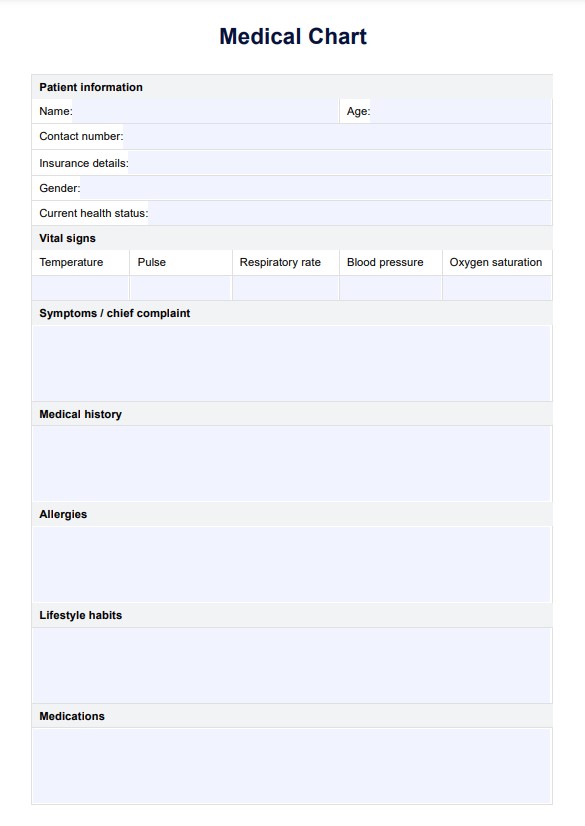Our Medical Chart Template provides a structured format for maintaining and organizing patient health records. It assists healthcare professionals in tracking patient history, treatments, and other essential medical data.

Medical Chart Template
Access a free Medical Chart Template and learn how to stay on top of your clinical documentation. Download the PDF and example here.
Use Template
Medical Chart Template Template
Commonly asked questions
Absolutely. Our template is designed to be flexible and can be adapted to meet the needs of practitioners involved in various healthcare settings, including hospitals, clinics, and private practice.
The template provides distinct sections for different types of information - patient history, consent forms, lab results, etc. This structure helps in keeping the medical chart organized and easily navigable.
EHR and practice management software
Get started for free
*No credit card required
Free
$0/usd
Unlimited clients
Telehealth
1GB of storage
Client portal text
Automated billing and online payments











